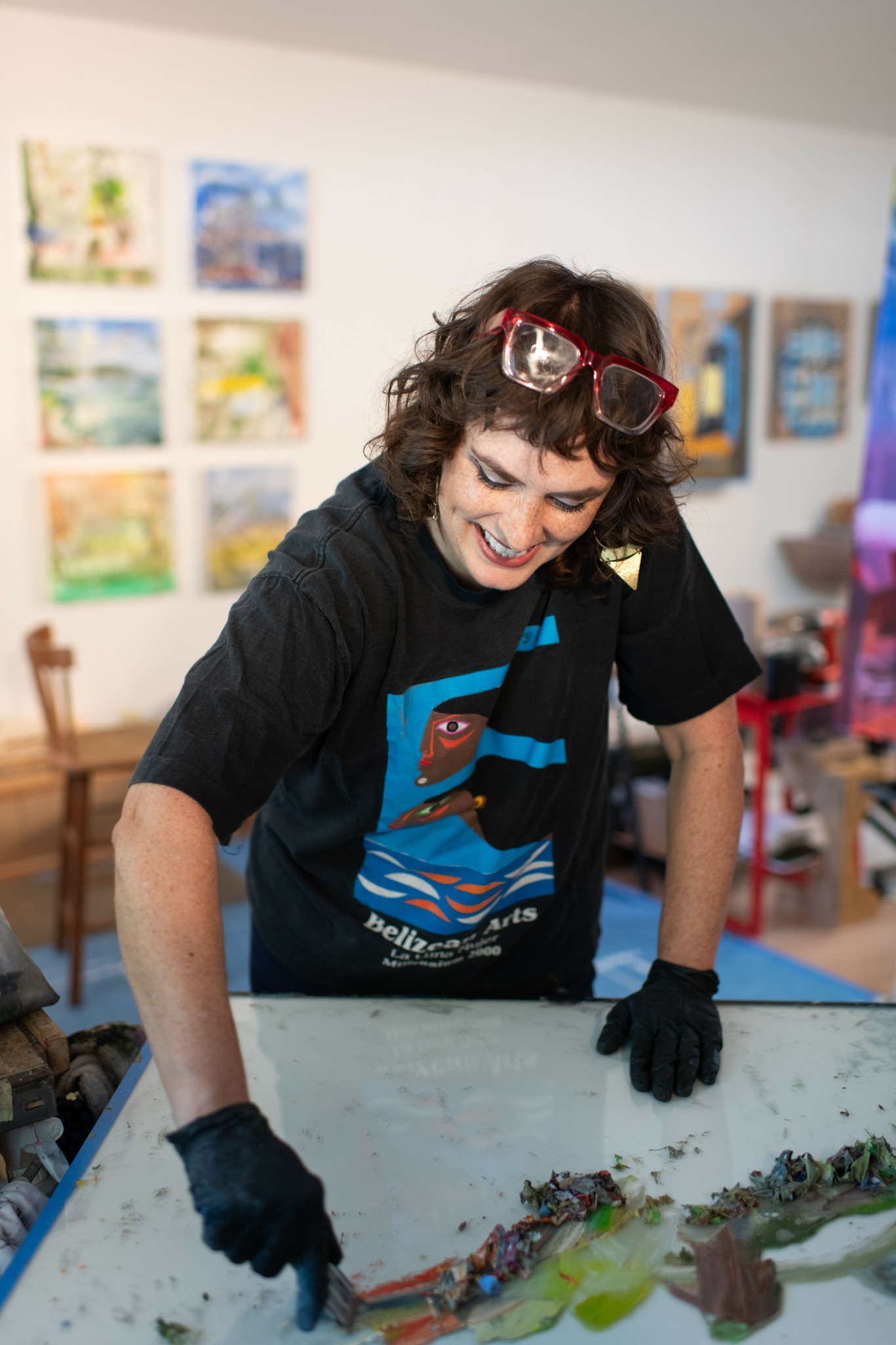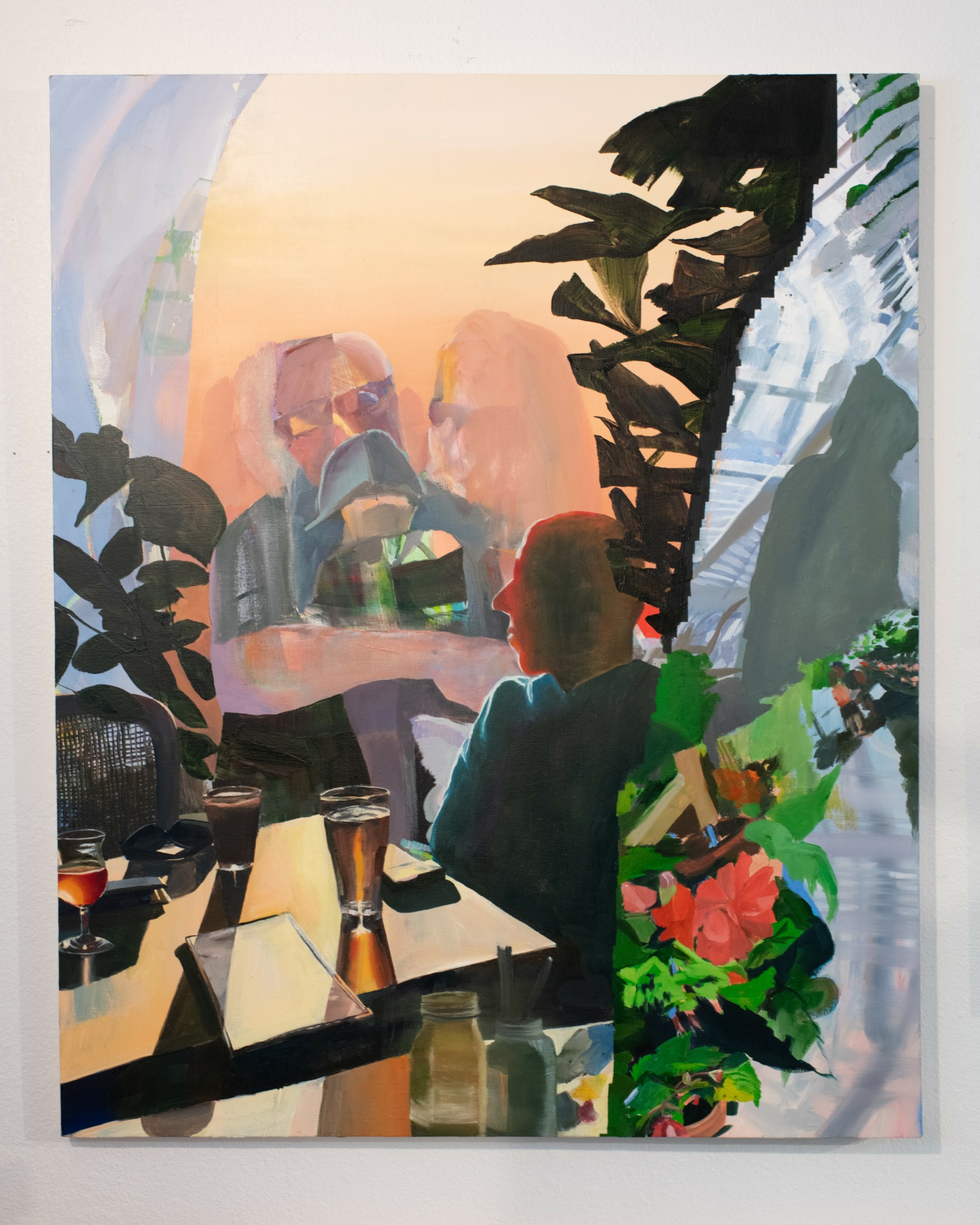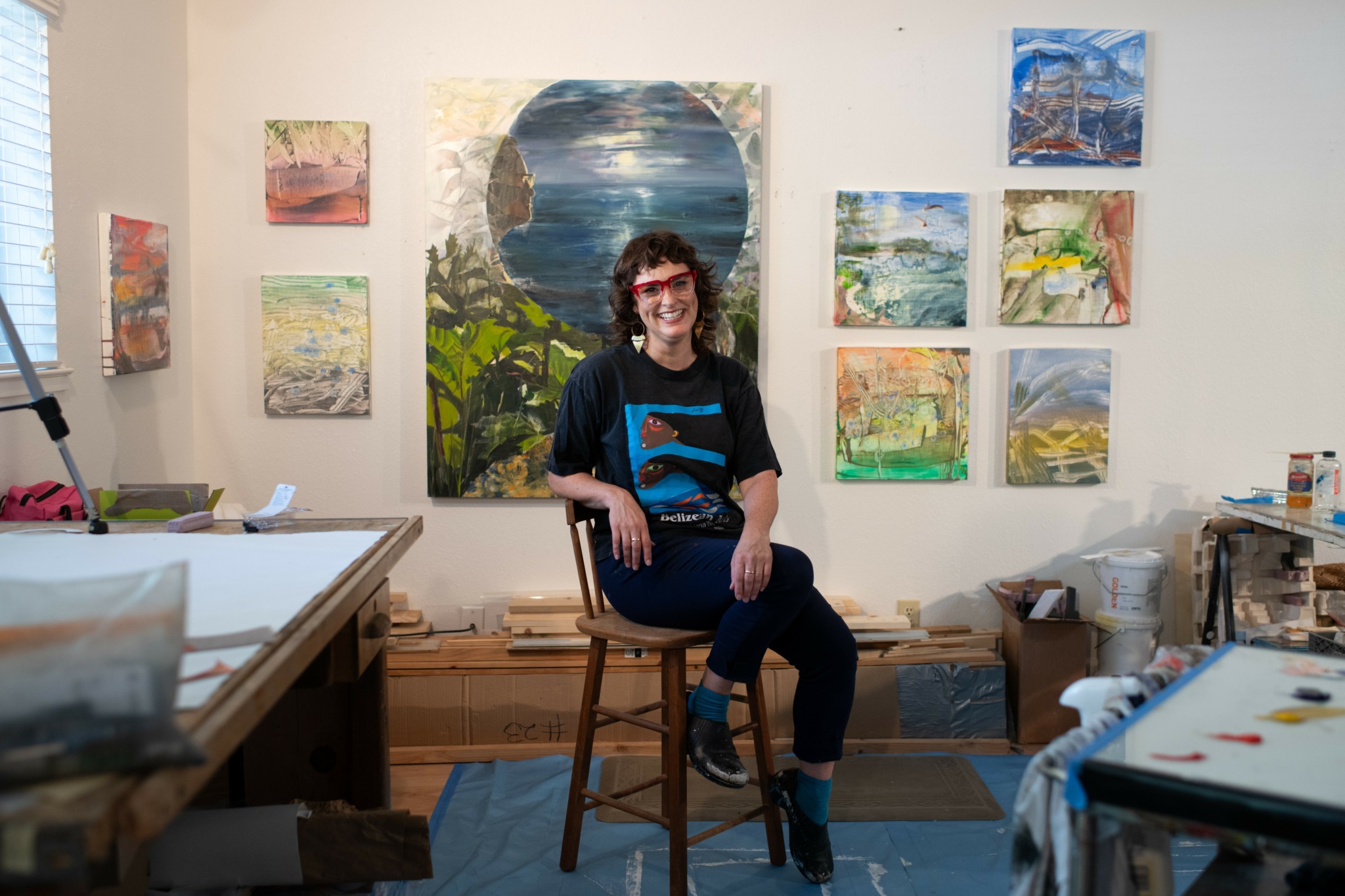We caught up with the brilliant and insightful Rachelle Agundes a few weeks ago and have shared our conversation below.
Rachelle, looking forward to hearing all of your stories today. We’d love to hear about when you first realized that you wanted to pursue a creative path professionally.
Before attending college, I had never known a professional artist—nor had I ever imagined that I could become one. I grew up in a working-class family, and I don’t think I ever set foot in an art museum or gallery as a child.
As an undergraduate at a small liberal arts college in Northern California, I quickly drew attention and encouragement from my art professors. My painting teacher, Terry St. John, was especially enthusiastic about my work. Through him, I learned not only about painting and art history but also what it meant to live as an artist.
Terry had an active career, exhibiting and selling his thick impasto figurative paintings through a respected gallery in San Francisco. I admired his work deeply, and his praise always carried great weight for me.
At the time, I was majoring in Graphic Design, believing it would provide a stable career path while still allowing me to be creative. But I took so many fine art courses that even my peers assumed I was a painting major. It wasn’t until I became Terry’s student that I first began to see a future for myself as an artist.
Toward the end of my undergraduate program, Terry encouraged me to apply to MFA programs. His belief in me gave me the courage to do so. I eventually moved to the East Coast for graduate school and began my life as a practicing artist.
Terry remained a dear friend and mentor for 24 years, until his passing in 2020. I visited him often in Berkeley, where he lived, and once even helped him pack and archive over 360 paintings when he moved to Thailand in his 80s.
I am forever grateful for his generosity, his guidance, and the profound impact he had on my life and career.

Rachelle, love having you share your insights with us. Before we ask you more questions, maybe you can take a moment to introduce yourself to our readers who might have missed our earlier conversations?
I don’t think anyone chooses to be an artist. It sort of chooses you. Not creating pictures or objects or whatever it is, isn’t an option. It affects your soul when you aren’t able to make things and hurts in a way. When I was in college, taking my first painting course, I would get this urgent feeling when I was painting. I think I was experiencing a knowing that I was doing exactly what I was meant to do.
Before attending college, I had never known a professional artist—nor had I ever imagined that I could become one. I grew up in a working-class family, and I don’t think I ever set foot in an art museum or gallery as a child.
I had some specific teachers in my life who saw me as an artist before I did. Their belief in me and my artwork gave me confidence and nudged me towards the path that I have been on ever since.
I remained in contact with my high school art teacher, Josifa Casey, meeting for lunch when I was in town, throughout the years. I visited her home about a month before she passed away from cancer. She was not well at all. I heard her tell her nurse that I was like a daughter she never had. She was so proud of me.
As an undergraduate at a small liberal arts college in Northern California, I quickly drew attention and encouragement from my painting teacher, Terry St. John. Through him, I learned not only about painting and art history but also what it meant to live as an artist. Terry had an active art career in San Francisco. I deeply admired his work, and his praise always carried great weight for me.
It wasn’t until I became Terry’s student that I first began to see a future for myself as an artist. His belief in me gave me the courage to move to the East Coast for graduate school and begin my life as a practicing artist.
Terry remained a dear friend and mentor for 24 years, until his passing in 2020. When I saw him he would say, “There’s the superstar.” I visited him often in Berkeley, CA, and once even helped him pack and archive over 360 paintings when he moved to Thailand in his 80s.
I studied later with the painter John Walker, who ran the MFA program at Boston University. But I met him before that, a year or two after my undergrad, when he came to give a talk and show his work at the campus gallery where I worked. I brought a few of my paintings to a class critique he visited. Afterward, he told me I should apply to his MFA program—but first, I should write to his friend at the Vermont Studio Center, an artist residency, and tell him that I am a genius [to help me get into the program]. I could work on a portfolio there to apply to his MFA program. He was bolstering me, but I wrote to his friend and said, “John Walker said I am a genius.” This makes me laugh now at how shameless youth is.
Are there any resources you wish you knew about earlier in your creative journey?
Although I have no regrets about my choice of graduate school, I do wish I had better understood the long-term consequences of taking out large student loans—loans I’m still paying off today.
I earned my MFA from Boston University, where I had the privilege of studying under the painter John Walker. It was exactly where I was meant to be, surrounded by people who had a lasting impact on my life and work.
Now, in my current role, I work directly with MFA and MA graduate students at the University of California, Davis. The Art Studio MFA program there is fully funded, meaning students graduate without incurring any debt related to their degree.
At the time I was applying to graduate schools, it never occurred to me that fully funded MFA programs even existed. I wish I had been more informed about those possibilities. While I wouldn’t change the path I took, I believe it’s important for anyone considering graduate study in the arts to carefully weigh the financial realities and to seriously consider programs that offer full funding.

We’d love to hear a story of resilience from your journey.
As I mentioned earlier, I come from a working-class family with five brothers. My father was a minority, and our financial situation didn’t allow for the same opportunities and experiences some of my peers had. While my parents always made sure we had what we needed, I became increasingly aware of the differences in upbringing compared to my graduate school cohort and friends as I got older.
Although many of my family members are exceptionally intelligent and unique, I was the first to graduate from college and am the only one with a graduate degree. Lately, as I raise my eight-year-old daughter, I’ve been reflecting more on the values I learned from my childhood.
I truly value all that I have. I’m resourceful, grounded, and capable of working many types of jobs—and doing them well. When I completed my MFA at Boston University, I moved to New York City and supported myself by juggling four jobs at once.
Because I wasn’t handed everything I wanted by my family, I figured out how to survive. I’m proud of the fact that I was confident in getting a job when I needed one, making it to the next paycheck on little money for food, and that I followed my dreams even when it was not easy.
Despite the demands of making a living, I never stopped making art. I remained committed to my studio practice and consistently pursued exhibition opportunities. I know who I am as an artist, and my values are crystal clear to me. I credit the resourcefulness and confidence that have allowed me to survive and thrive to my family and the way I was raised.
Contact Info:
- Website: https://www.rachelleagundes.com/
- Instagram: https://www.instagram.com/ragundes/

Image Credits
Photo credit: © Marjorie Williams


